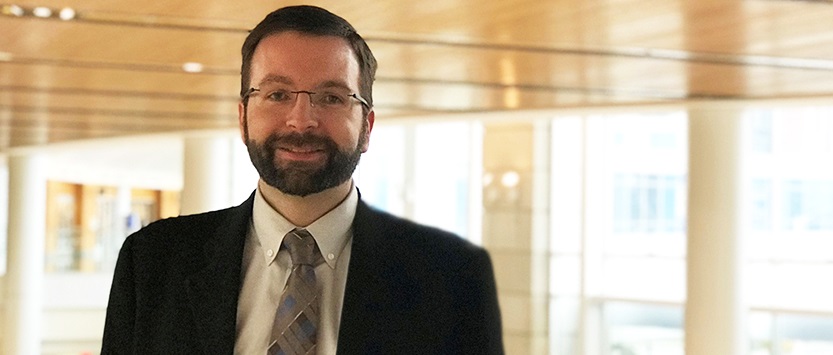
 Stephen B. Hobbs, MD, FSCCT
Stephen B. Hobbs, MD, FSCCT
- Vice-Chair, Radiology Informatics and Integrated Clinical Operations
- Chief, Division of Cardiovascular and Thoracic Radiology
- Medical Director, UK HealthCare Imaging Informatics
- Vice-Chair, Radiology Informatics and Integrated Clinical Operations
- Chief, Division of Cardiovascular and Thoracic Radiology
- Medical Director, UK HealthCare Imaging Informatics

 Stephen B. Hobbs, MD, FSCCT
Stephen B. Hobbs, MD, FSCCT
- Vice-Chair, Radiology Informatics and Integrated Clinical Operations
- Chief, Division of Cardiovascular and Thoracic Radiology
- Medical Director, UK HealthCare Imaging Informatics
- Vice-Chair, Radiology Informatics and Integrated Clinical Operations
- Chief, Division of Cardiovascular and Thoracic Radiology
- Medical Director, UK HealthCare Imaging Informatics
Gill radiologist combines love for technology with medicine to help patients


For our latest edition of Making the Rounds, we caught up with Dr. Stephen B. Hobbs, a cardiothoracic radiologist at the UK Gill Heart & Vascular Institute. As a cardiothoracic radiologist, Dr. Hobbs uses imaging technology to evaluate lung conditions. In addition to radiology, he is also deeply interested in imaging informatics and information technology, which he applies to his work as a radiologist.
Why did you want to become a doctor?
In college, I was actually not sure that I wanted to be a physician. I was strongly considering a research career in chemistry, which was my undergraduate focus. However, as I journeyed down that path, I increasingly realized that I enjoyed the human side of medicine more than being in a lab.
Why did you choose to pursue cardiothoracic radiology?
I find cardiothoracic radiology rewarding because of the emphasis on a multidisciplinary approach to helping and evaluating patients. Imaging of lung conditions, especially complex interstitial lung disease, requires coordinated care and input from a variety of providers trained not only in pulmonology or thoracic surgery but also disciplines such as rheumatology, pathology and genetics.
My other career focus has been informatics and information technology. Interestingly, radiology is the only medical specialty to exist entirely because of innovations in technology. The field of radiology has always been an early adopter of pioneering advancements, with many departments moving to digitized records in the 1990s, well before electronic health records were considered viable. That close relationship with technology drew me into radiology, and it’s been a key component of my career.
What do you enjoy most about your work?
I enjoy working with other physicians operating at the top of their field. The multidisciplinary approach taken for our patients is extremely rewarding both academically and personally.
Tell us about your family.
My wife, Fareesh Kanga, is a child psychiatrist who specializes in integrative care and school-based mental health programs. I have two wonderful daughters, Ameera and Niya, who enjoy gymnastics and violin.
My family likes to travel, and we have visited places ranging from Patagonia to New Zealand. At the top of our travel wish list would be a trip to Greece to explore the ancient ruins and mythology of their culture.





